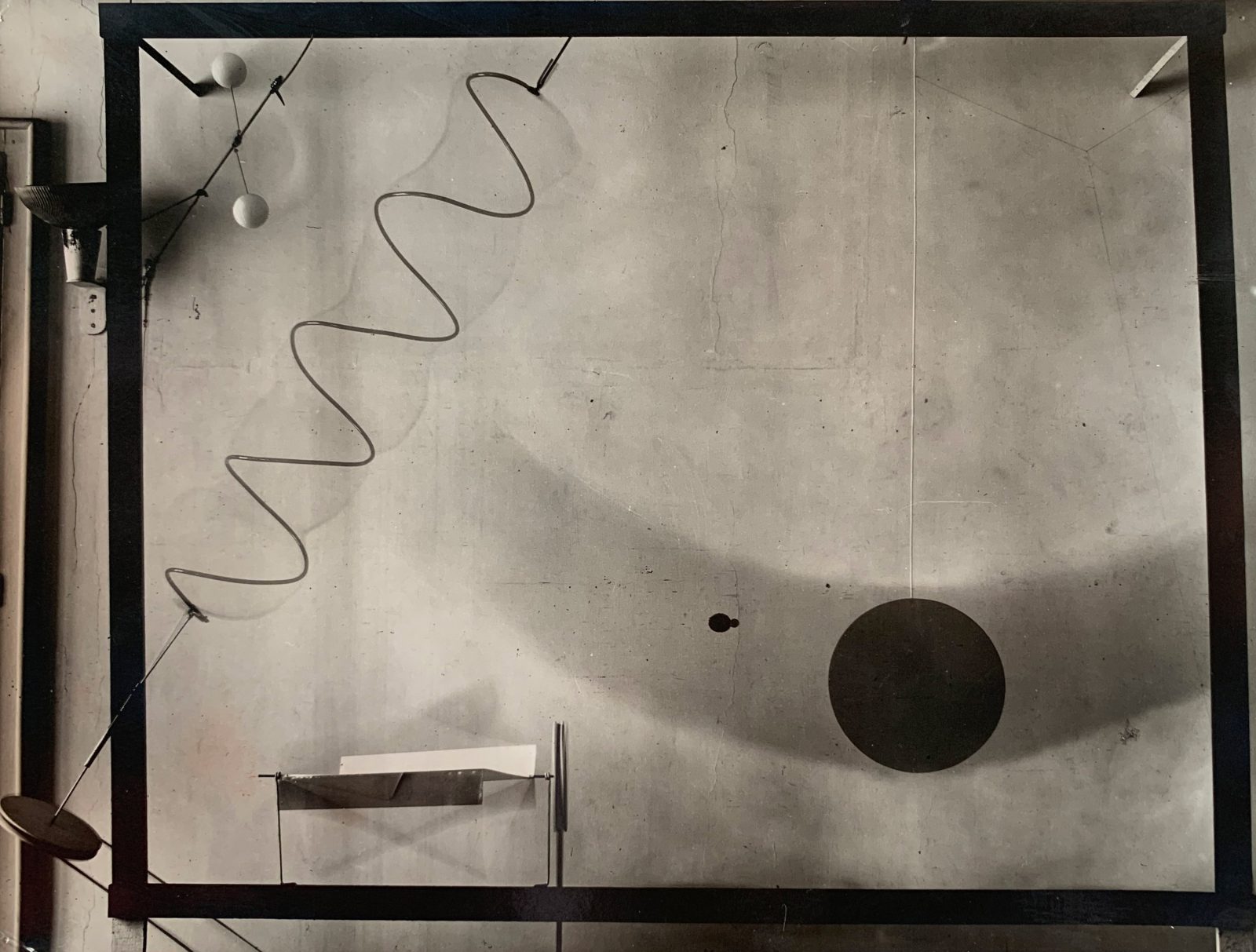Featured Text
Un “Mobile”
Abstraction-Création, Art Non Figuratif, no. 2 (1933). Translation courtesy Calder Foundation, New York.
Abstraction-Création, Art Non Figuratif, no. 2 (1933). Translation courtesy Calder Foundation, New York.
Un “Mobile.”
Dimensions : 2 mètres sur 2 mètres 50.
Cadre : 8 centimètres, rouge neutre.
Les 2 boules blanches tournent à grande vitesse.
L’hélice noire tourne à petite vitesse et semble toujours monter.
La planche de tôle tourne encore moins vite, les deux lignes noires semblent toujours monter.
Le balancier noir, 40 centimètres de diamètre, monte de 45° de chaque côté, dépassant le cadre par devant, à raison de 25 tours par minute.

A “Mobile.”
Dimensions: 2 meters by 2 meters 50.
Frame: 8 centimeters, neutral red.
The 2 white balls turn very rapidly.
The black helix turns less rapidly and seems to always climb.
The iron plate turns still less quickly, the two black lines seeming always to climb.
The black pendulum, 40 centimeters in diameter, climbs by 45° on each side, passing in front of the frame, at the rate of 25 turns a minute.
Berkshire Museum, Pittsfield, Massachusetts. Modern Painting and Sculpture: Alexander Calder, George L.K. Morris, Calvert Coggeshall, Alma de Gersdorff Morgan. Exhibition catalogue. 1933.
Alexander Calder, Statement
Group Exhibition CataloguePierre Matisse Gallery, New York. Mobiles by Alexander Calder. Exhibition catalogue. 1934.
James Johnson Sweeney, Mobiles by Alexander Calder
Solo Exhibition CatalogueThe Renaissance Society at The University of Chicago. Mobiles by Alexander Calder. Exhibition catalogue. 1935.
James Johnson Sweeney, Alexander Calder’s Mobiles
Solo Exhibition CatalogueCalder, Alexander. “Mobiles.” In The Painter’s Object, edited by Myfanwy Evans. London: Gerald Howe, 1937.
General ReferenceFollowing a visit in October of 1930 to Piet Mondrian’s studio, where he was impressed by the environmental installation, Calder made his first wholly abstract compositions and invented the kinetic sculpture now known as the mobile. Coined for these works by Marcel Duchamp in 1931, the word “mobile” refers to both “motion” and “motive” in French. He also created stationary abstract works that Jean Arp dubbed “stabiles.”